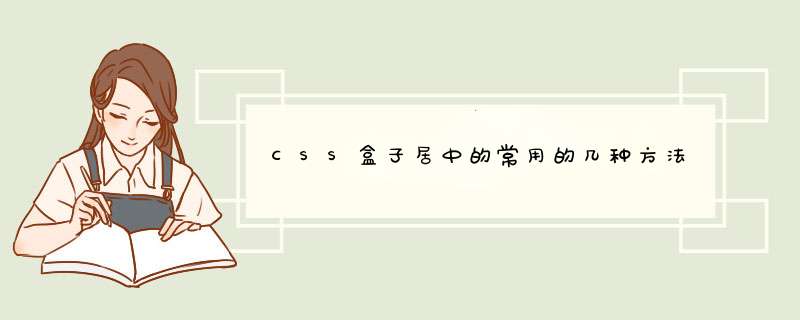
第一种:
用css的position属性
<style type="text/css">
.div1 {
width: 100px;
height: 100px;
border: 1px solid #000000;
position: relative;
}
.div2 {
width: 40px;
height: 40px;
background-color: red;
position: absolute;
margin: auto;
top: 0;
left: 0;
right: 0;
bottom: 0;
}
</style>
<div class="div1">
<div class="div2 ">
</div>
</div>
效果图:
第二种:
利用css3的新增属性table-cell, vertical-align:middle;
<style type="text/css">
.div1 {
width: 100px;
height: 100px;
border: 1px solid #000000;
display: table-cell;
vertical-align: middle;
}
.div2 {
width: 40px;
height: 40px;
background-color: red;
margin: auto;
}
</style>
<div class="div1">
<div class="div2">
</div>
</div>
效果:
第三种:
利用flexbox布局
<style type="text/css">
.div1 {
width: 100px;
height: 100px;
border: 1px solid #000000;
display: flex;
/*!*flex-direction: column;*!可写可不写*/
justify-content: center;
align-items: center;
}
.div2 {
height: 40px;
width: 40px;
background-color: red;
}
</style>
<div class="div1 ">
<div class="div2 ">
</div>
</div>
效果:
第四种:
利用transform的属性(缺点:需要支持Html5)
<style type="text/css">
.div1 {
width: 100px;
height: 100px;
border: 1px solid #000000;
position: relative;
}
.div2 {
height: 40px;
width: 40px;
background-color: red;
position: absolute;
top: 50%;
left: 50%;
-ms-transform: translate(-50%, -50%);
-moz-transform: translate(-50%, -50%);
-o-transform: translate(-50%, -50%);
transform: translate(-50%, -50%);
}
</style>
<div class="div1 ">
<div class="div2 ">
</div>
</div>
效果图:
到此这篇关于CSS盒子居中的常用的几种方法(小结)的文章就介绍到这了,更多相关CSS盒子居中内容请搜索脚本之家以前的文章或继续浏览下面的相关文章,希望大家以后多多支持脚本之家!
欢迎分享,转载请注明来源:内存溢出

 微信扫一扫
微信扫一扫
 支付宝扫一扫
支付宝扫一扫
评论列表(0条)